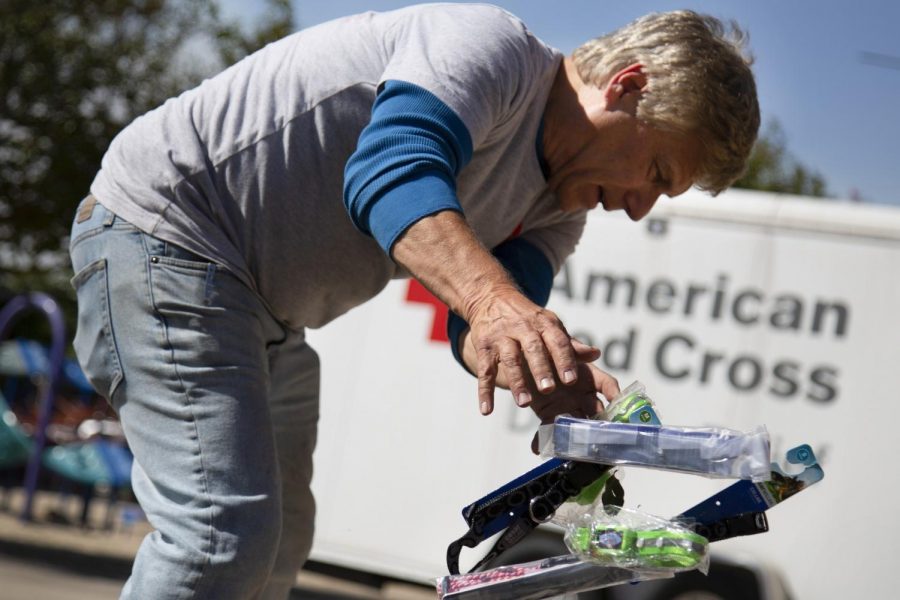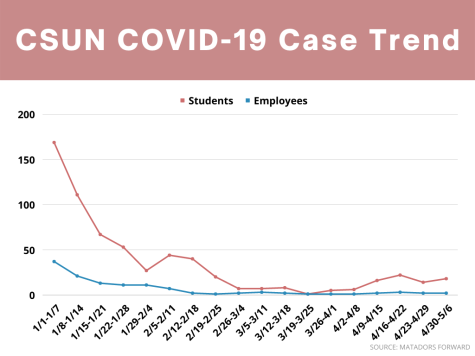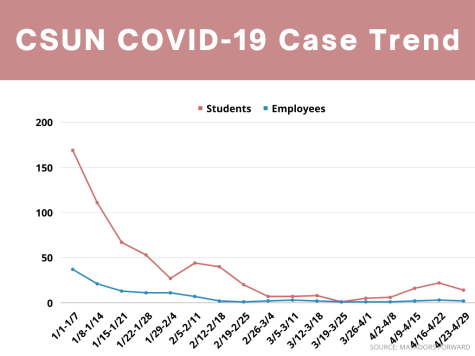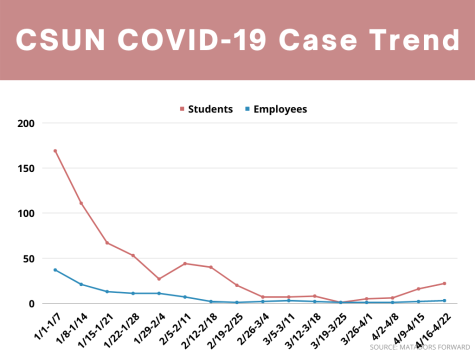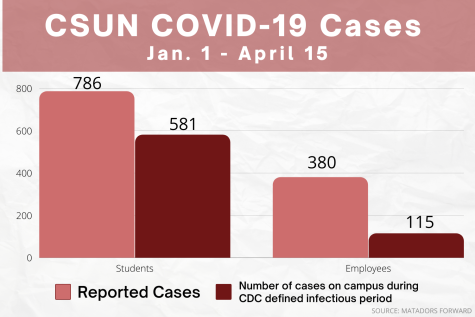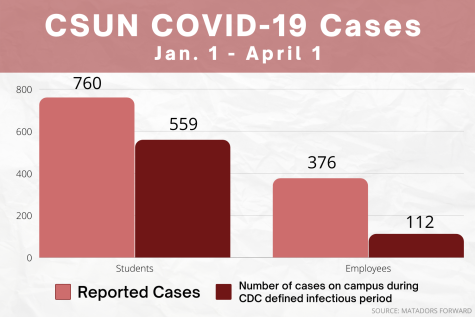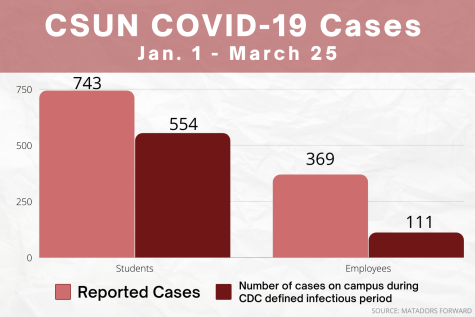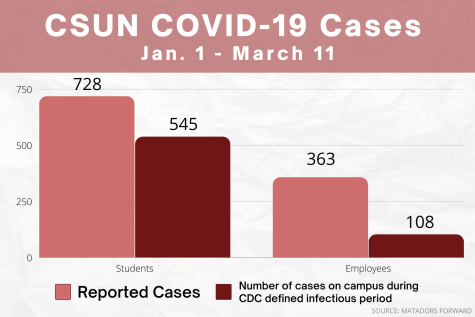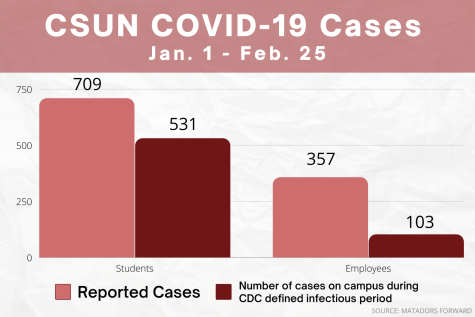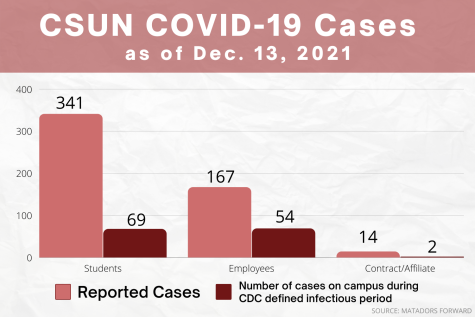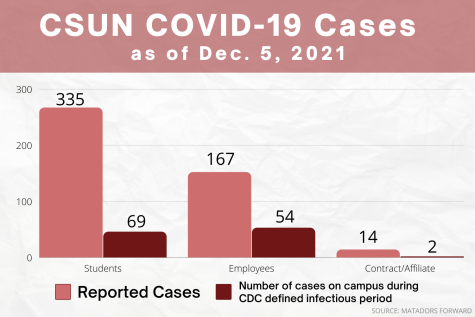California struggles with disaster relief amid pandemic
A volunteer helps distribute supplies during the Saddleridge fire last October. Southern California faces a difficult task of battling fires during the COVID-19 pandemic.
August 7, 2020
With over 20,000 acres scorched by the Apple Fire, triple-digit temperatures and dry winds forecasted by the National Weather Service for parts of Southern California, and the ongoing threat of COVID-19, disaster relief and fire authorities across Southern California are facing a difficult summer.
This year, the images commonly associated with disaster relief — crowded evacuation centers, buffet meals, displaced families sharing resources — will look very different.
Los Angeles is on track to have a severe fire season. On July 1, the National Significant Wildland Fire Protection Outlook predicted a higher-than-normal chance of wildfires in Northern California, and the usual risk of “large significant” burning. From Jan. to Aug. 2019, Cal Fire reported 23,856 acres burned. From January to August of this year, CalFire has reported 94,505 acres — nearly four times as much acreage.
Fire agencies like the L.A. Fire Department and the California Department of Forestry and Fire Protection face a unique struggle. As of Aug. 5, 155 LAFD employees have tested positive for COVID-19, and as of July 23, 33 Cal Fire employees have tested positive. Fire camps set up to battle large wildfires are usually busy and crowded places, filled with hundreds of firefighters from agencies across the country delivering mutual aid.
“Traditional base camps at a wildland fire incident create an ideal environment for the transmission of infectious diseases due to high-density working and living conditions. Therefore, we are taking proactive measures to keep our members healthy and safe,” LAFD Capt. Erik Scott said.
Measures include conducting temperature checks, using video calls for briefings, wearing masks, and using hand-washing stations.
Christine McMorrow, a Cal Fire resource management communications officer, said Cal Fire is taking similar precautions to keep responders safe on 911 calls.
McMorrow said that dispatchers are now asking if callers are experiencing COVID-19 symptoms, and limiting contact when responders are in the home. To make up for the loss of inmate firefighters and mutual aid from other states, Cal Fire is pulling from new hires and bringing on 858 new firefighters.
L.A. authorities say that they are working to create strategies that protect communities with social distancing and other COVID-19 precautions in mind.
At a press conference on July 9, Gov. Gavin Newsom announced several new measures for disaster relief during the pandemic, including health screenings, temperature checks, individually portioned meals, more firefighters, and new air units for Cal Fire. Additionally, the state will use fairgrounds, college dorms, hotel rooms, Airbnb and campgrounds as evacuation centers.
Organizations and agencies across the state say they are adapting their policies and leaning into community-supported programs. According to Cristanza Gonzalez, the emergency manager for the Valley Disaster Management Bureau, city organizations regularly run disaster scenarios and imagine how they could play out, but no amount of planning can create a perfect solution.
“It doesn’t matter how many times we train for a fire — each fire is different,” Gonzalez said.
Gonzalez and her colleague Carmina De Santiago, an L.A. Public Health liaison, emphasized that local community-supported programs like Ready Your L.A. Neighborhood, also known as RYLAN, are one of the best ways L.A. residents can help their families stay safe.
The California Governor’s Office of Emergency Services, which oversees emergency preparedness across the state, said they have moved 60% of their operations to telework. Employees who are in the office are required to do daily temperature checks, practice social distancing and wear masks.
“With COVID-19 this year, it adds a level of complexity to the situation,” said Elaine Kong, a Cal OES public information officer. “We want all Californians to be as prepared as possible. Meaning everyone should have alerts turned on, on their phones, listen to local authorities for the most accurate and updated information.”
The Red Cross of L.A., like many other disaster authorities, said that even though the way they respond to disasters has changed, their mission has not.
The organization is focusing on adding COVID-19 precautions to their relief efforts and expanding volunteer efforts. Shelters will now include health screenings and temperature checks, and they will be more spread out to promote social distancing, according to Marilyn Jiminéz Dávila, a Red Cross spokesperson. Masks will be mandatory and volunteers will ask those coming in if they have been experiencing symptoms of COVID-19.
Jiminéz said the organization is working to recruit volunteers in the field and from home, which has opened up volunteering to communities that haven’t been able to help before. She emphasized that volunteers are essential to the Red Cross — especially now.
“We couldn’t do what we do without volunteers,” she said.
Jiminéz also emphasized that even with these changes, the Red Cross is still an organization that people can rely on for services and relief: “When you show up, it’s a safe place to be if you’ve had to evacuate.”
L.A. emergency authorities advised that residents have many resources to help them stay alert, prepared and ready for action. Residents can download the app ShakeAlertLA or sign up for email alerts from LAFD to get the most current emergency information; residents can also get text alerts from L.A. city by texting READY to 888-777. The website readyforwildfire.org has tips and advice for homeowners on what to do in the event of a wildfire.
